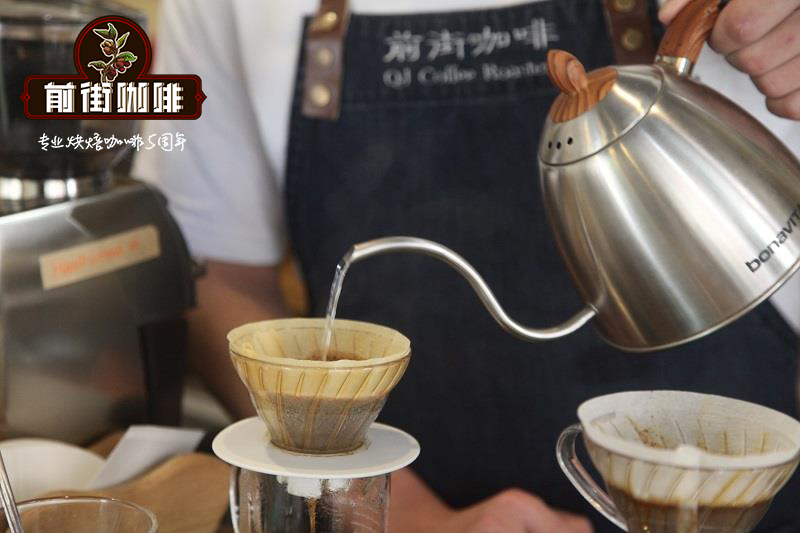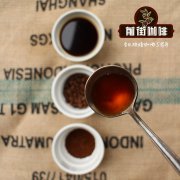The Story of hand-made Coffee Universal filter Cup V60 History how to make coffee with V60 filter cup

The story of Hario, the designer of the V60 filter cup, combines chemistry, glassware and coffee. In fact, if you have read Chemex-A Guide to History and Brewing, you may remember that it was designed by chemists. Hario was founded in Tokyo in 1921 to produce and sell physical and chemical glass products. After nearly 30 years of research, they have produced Hario Glass. It uses 100% natural minerals to refine heat-resistant glass to make it environmentally friendly. Then in 1949, Hario launched its first household product: a glass-filtered coffee siphon. By 1957, it had become a filter cloth coffee siphon.
Hario has won hundreds of design awards, but the V60, launched a decade ago, has become its most famous invention. The name comes from vector 60, the 60 °angle of the cone. V60 first introduces ceramics and glass, then plastics, and finally metal.
The final version of the Hario V60 is a copper coffee emitter. It is designed for high thermal conductivity, and because of its better thermal insulation, the extraction effect is better.
V60 responds to many variables and, in fact, it has more drips than any other drip on the market. This is due to three design factors:
1. Conical (60 °): this allows water to flow to the center, prolonging contact time.
two。 A large single hole: this makes it possible to change the flavor by changing the speed of the flow.
3. Spiral ribs: the spiral ribs rise all the way to the top and allow air to escape, maximizing the expansion of coffee grounds.
Going back to variables, the two most important variables you can use are grinding size and water flow. If water is added slowly, the result will be strong coffee, but if it is added faster, it will eventually lead to weaker extraction and lighter coffee.
Grinding size will also affect Body. If your grinding powder is small (about the size of salt), the water will not pass so easily. This means:
Constant water flow + small grinding size = moderate coffee
Slow flow + small grinding size = rich coffee
Constant water flow + medium size = light coffee
Slow flow + medium size = light coffee
PS: fine grinding can cause asphyxiation. If this happens, more rough grinding is required.
With this dripping head, play at any time! As long as you follow the basic steps, you can choose any combination you want.
Prepare:
1. Boil high-quality water until the temperature is between 90 °C and 96 °C (if you do not have a thermometer, wait 30-45 seconds).
two。 Fold the filter (bleached or natural) along the seam.
3. Rinse the filter thoroughly. If it is a natural filter, please be very careful. Rinsing can not only eliminate the paper smell, but also heat the V60 and the server. If it is not heated, the temperature of the water will drop sharply and the coffee will not be extracted correctly.
4. Grind the fresh coffee beans and you can begin.
Dumping:
Because of the conical shape of the V60, you do need a goose neck kettle. Otherwise, it is difficult to pour water, which is very important for controlling the flow (as mentioned above, this is very important).
First pour twice the amount of coffee in V60, and then let it blossom. This is always my favorite part, because you can see how fresh your ground is. After waiting for 30-45 seconds, start rewinding. Your grinding volume and water flow will affect the pouring time, but ideally it should take 2 to 4 minutes.
Important Notice :
前街咖啡 FrontStreet Coffee has moved to new addredd:
FrontStreet Coffee Address: 315,Donghua East Road,GuangZhou
Tel:020 38364473
- Prev

Is the more espresso oil the better? how to judge whether the espresso oil is good or bad?
What is Klima? Crema is formed in the process of espresso extraction. In the Coffee World Atlas, written by James Hoffman (JamesHoffmann), he explained that when water is under pressure, it dissolves more carbon dioxide, which is produced in coffee beans during roasting.
- Next

The history of the development of mocha pot how to use mocha pot to make coffee can mocha pot make espresso
The mocha pot, the product of Italian coffee culture, was invented in Italy and is a natural development of the coffee industry in that country. Coffee was first introduced to Italy in the 16th century as an exotic and expensive luxury. As a result, it is mainly spent by wealthy Italians in commercial cafes. These companies use hot dipping to prepare and serve coffee in coffee pots. The growth of demand has prompted innovators to look for
Related
- Beginners will see the "Coffee pull flower" guide!
- What is the difference between ice blog purified milk and ordinary milk coffee?
- Why is the Philippines the largest producer of crops in Liberia?
- For coffee extraction, should the fine powder be retained?
- How does extracted espresso fill pressed powder? How much strength does it take to press the powder?
- How to make jasmine cold extract coffee? Is the jasmine + latte good?
- Will this little toy really make the coffee taste better? How does Lily Drip affect coffee extraction?
- Will the action of slapping the filter cup also affect coffee extraction?
- What's the difference between powder-to-water ratio and powder-to-liquid ratio?
- What is the Ethiopian local species? What does it have to do with Heirloom native species?

